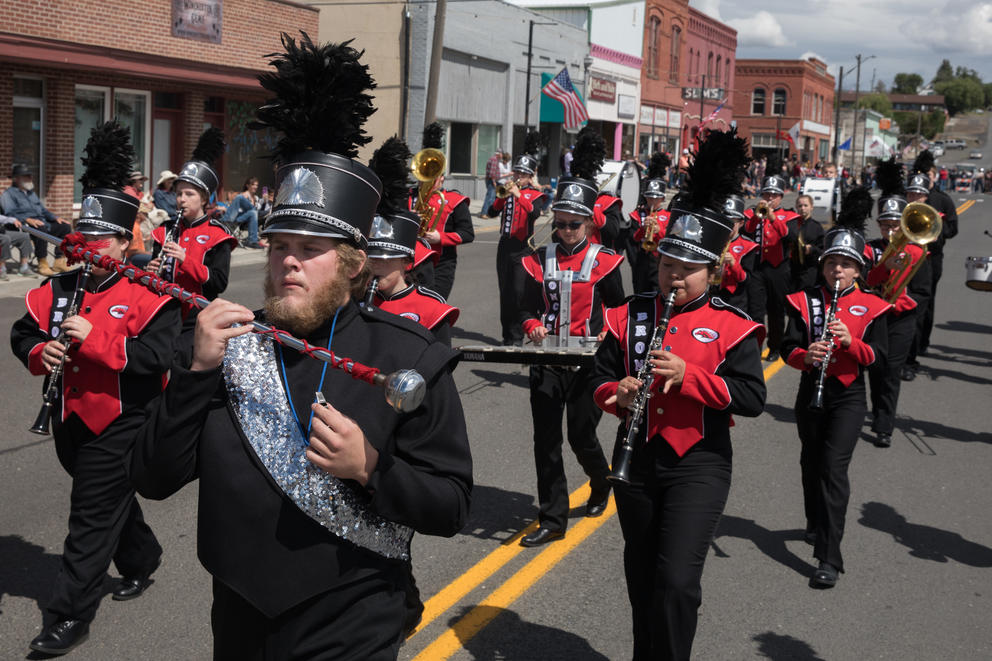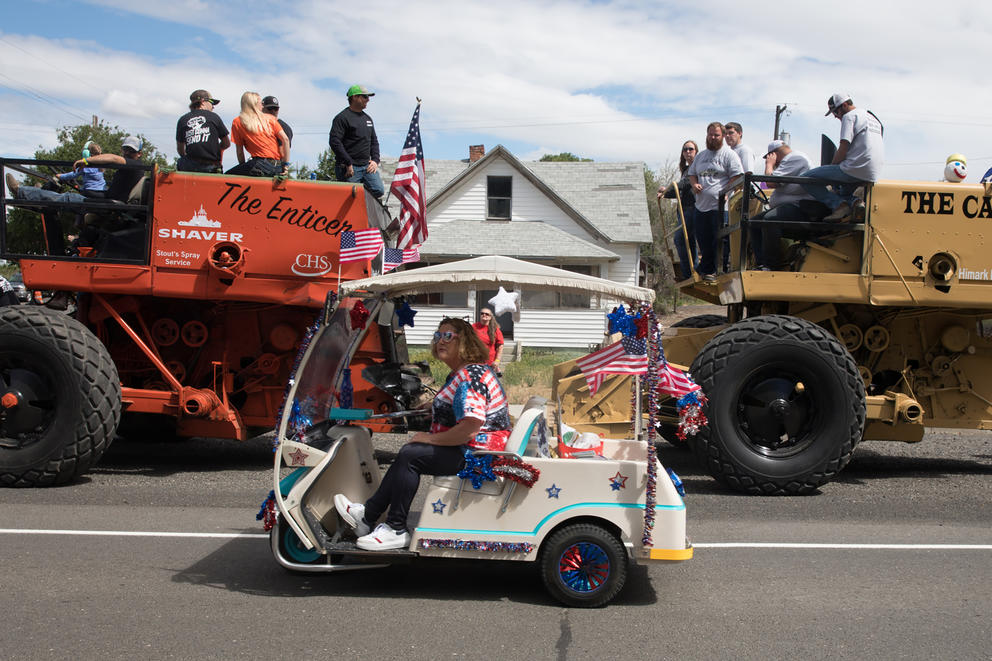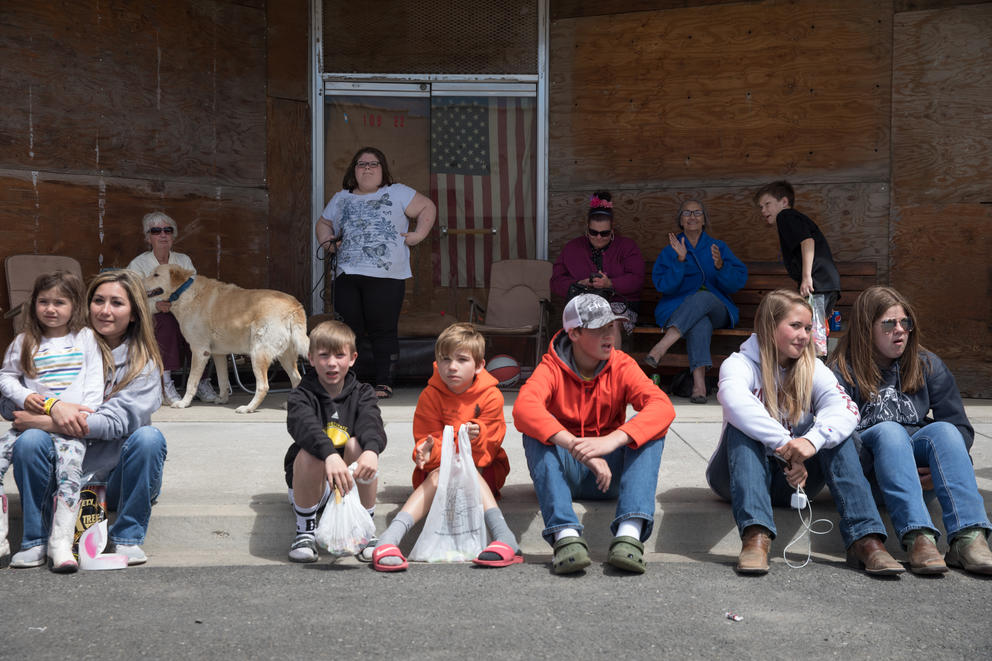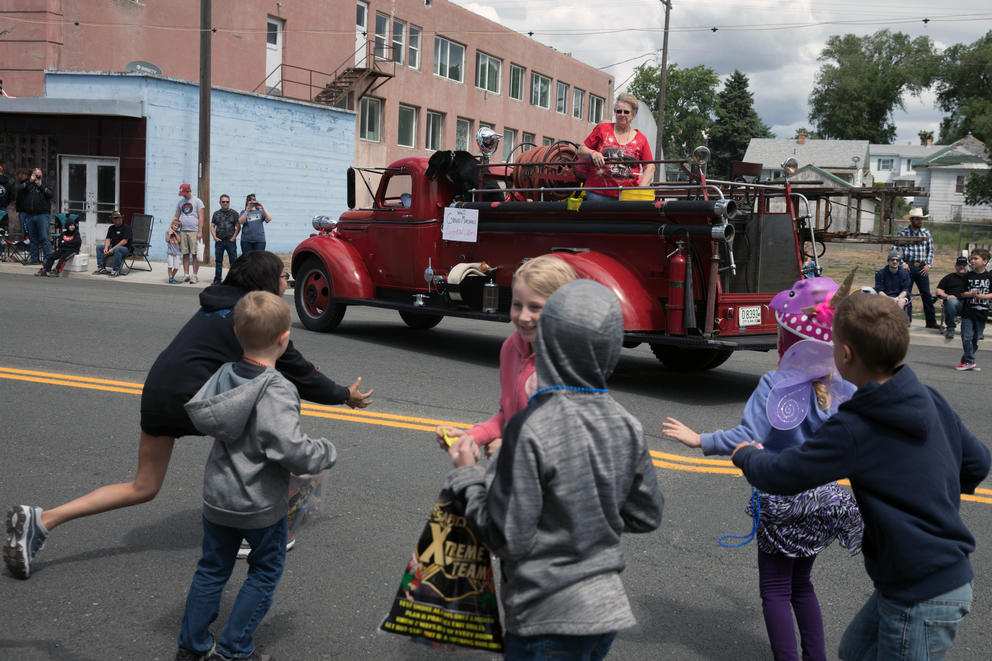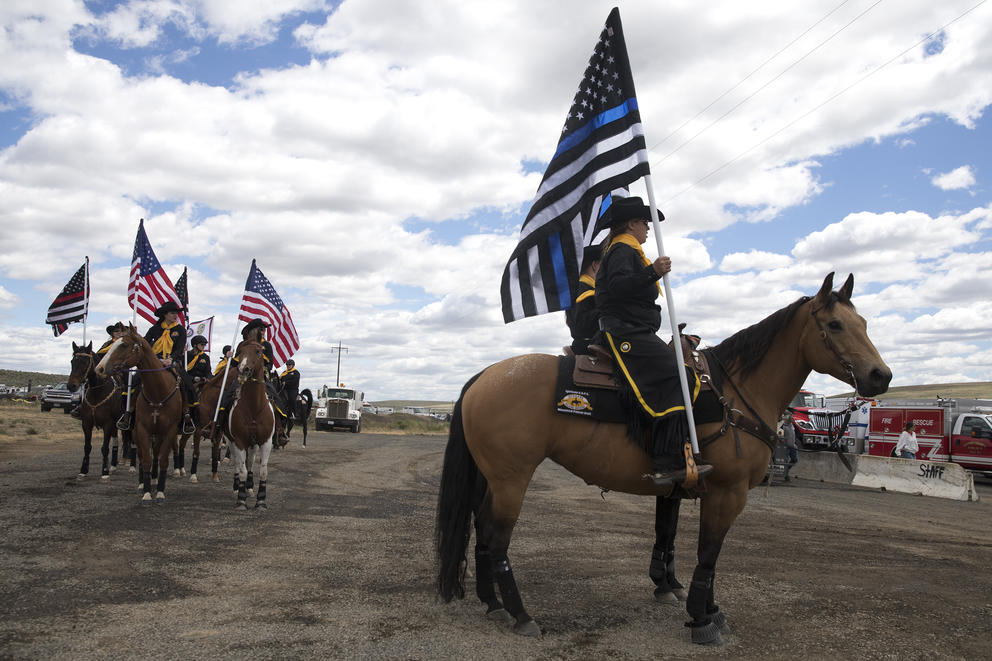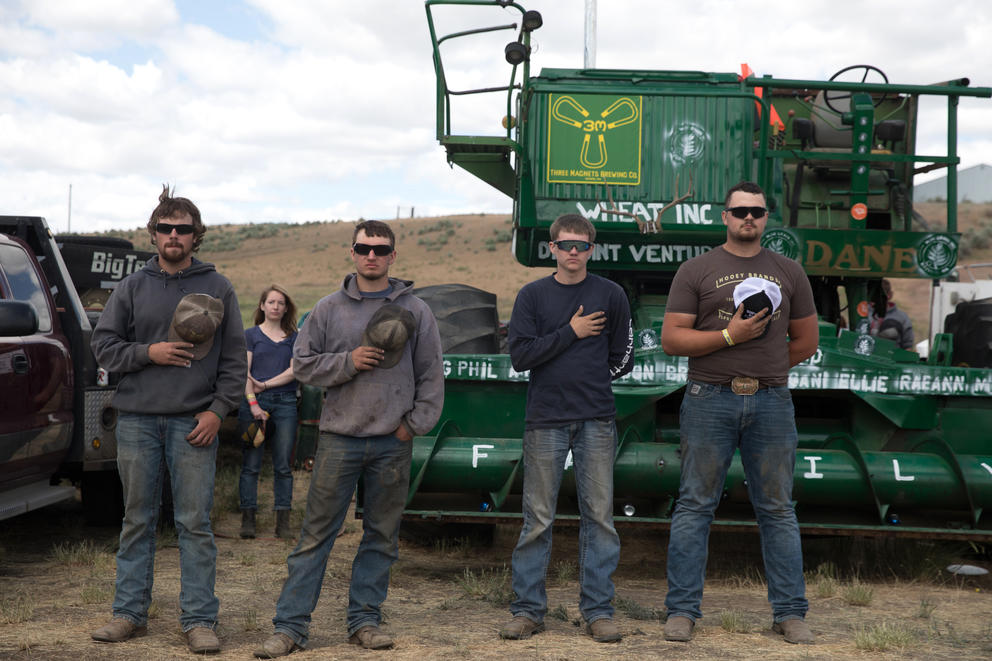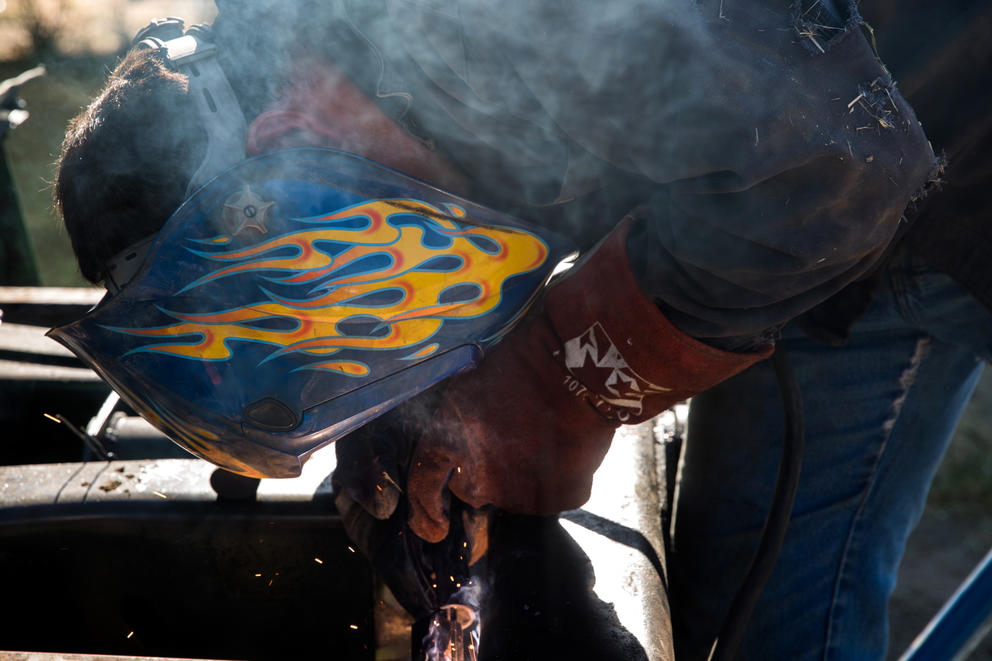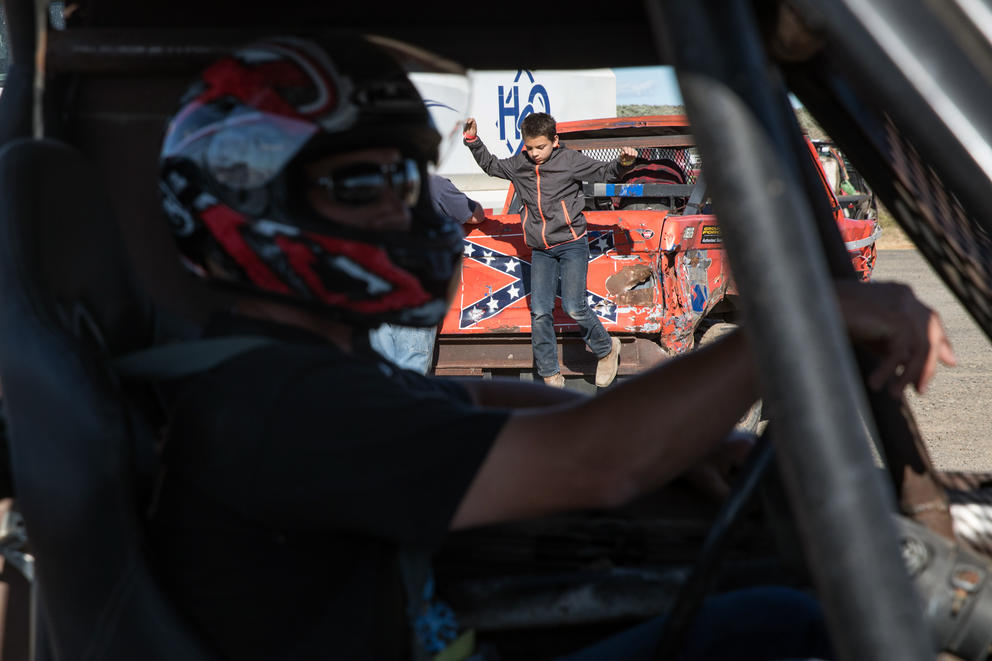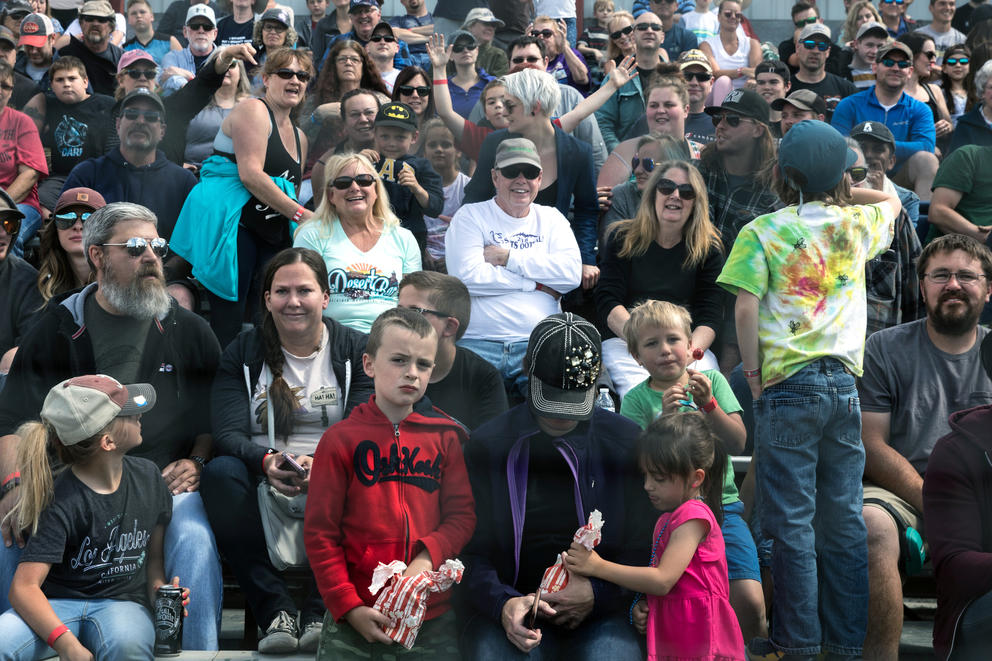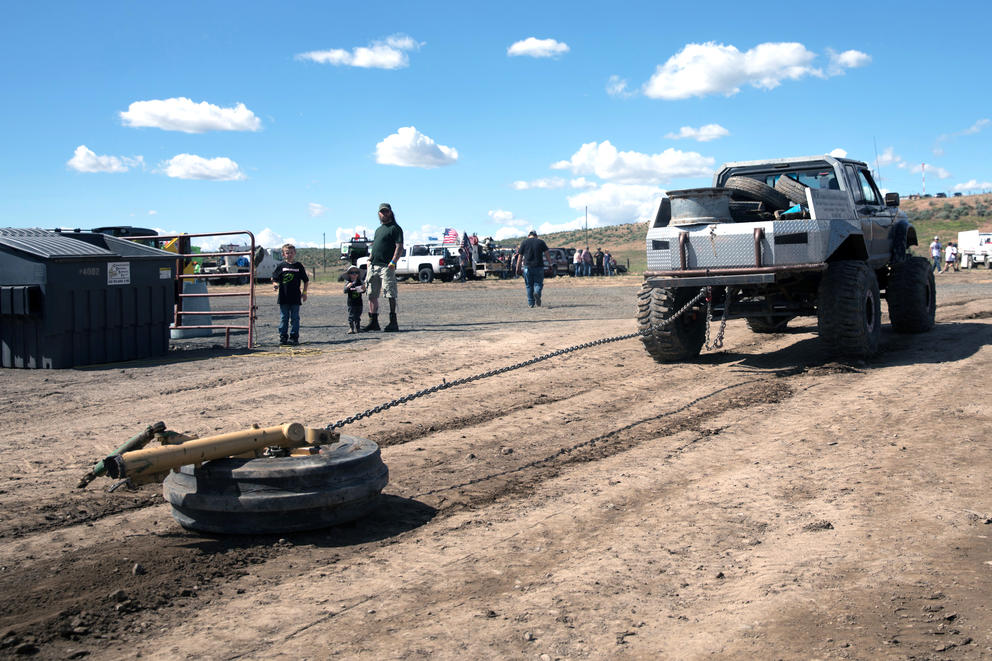That’s right, the big, old machines that helped turn Adams County, where Lind is, and other parts of Eastern Washington into the world’s breadbasket, meet in combat amid crowds enjoying beer, barbecue and, usually, sunshine the first weekend in June.
The derby is a bit like watching rutting bison bang horns, or slow-moving but agile sumo wrestlers — wrapped in steel — circle before using force and leverage to knock opponents out of competition. For many local combine drivers who have grown up with the derby, one tells me, “It signals the start of summer. It seems like Christmas to me!” It’s a chance to have fun and blow off steam before the work of the harvest takes over.
Lind is 1½ hours southwest of Spokane, 3½ hours east of Seattle. It sits in the middle of dryland wheat country, a modest, tidy town of of some 550 people (down from its 1910 high of over 800), with 19th century homes, a short main street and a classic middle American feel.
Its big community event climaxes with the Demolition Day. It starts on a Saturday morning with a community breakfast, then a parade. I had a chance to see the town up close from a festive perspective when I approached a combine waiting to roll in the parade line and was unexpectedly invited up to talk with the folks who readied it. I climbed on board and got a front-seat view.
The combine was named the “Red, White and Booze” and painted to match. The old combines in the derby — most of them date back to the 1970s — are long retired from actual work. Some have been kept running or for spare parts; others just sit and rust as newer, computer-guided “smart” combines costing some $500,000 or more have replaced them as the workhorses of the fields. “One man’s scrap is another man’s treasure here,” a derby driver tells me. The old machines have a purpose now: entertainment.
Old rigs are purchased, sometimes for only a few hundred bucks, or donated for the derby. Farmers and their crews spend winter and spring getting them ready for the competition — bracing certain parts, removing others, painting them bright colors with the names of sponsors and crews. They are given hand-painted monikers too, like “Jager Bomb,” “The Enticer,” “Grain Digger” or “S*M*A*S*H.”
Sitting on the front of a combine was a great way to get a bird’s-eye view of Lind, as we slowly trundled down Second Avenue, the wide street running through the few blocks of downtown. Spectators lined the road to watch floats, combines, emergency vehicles and fire trucks, a school marching band and volunteer women from the Spokane Mounted Patrol on horseback with flags and yellow scarves that made them resemble the U.S. Cavalry. Kids scrambled for candy tossed by float passengers. It was a friendly, all-American scene.
Competing combines come from all over Eastern Washington and Oregon, but most are from Lind or elsewhere in Adams County. The event is sponsored by the Lind Lion’s Club.
Lind has struggled along with other ag towns. Wheat and commodity prices are low, tariffs and trade standoffs don’t help, agricultural advancements mean fewer people are needed to produce crops. The derby gives Lind an economic boost, and likely a morale boost as well.
Alexis Guizar of team ‘Red, White, and Booze’ gets smashed by competitors while driving his combine in the demolition derby.
There are hopeful signs, too. For example, the town is learning to harvest another crop: the sunlight. On a hill near the town cemetery is the state’s largest solar array, built to generate renewable energy for Spokane-area industry. Wide open spaces, little rain, big skies have new potential. Another positive sign: a combine entry, “Malt Muncher,” which was sponsored by an Eastern Washington grain co-op and malting enterprise, local brewers and distillers. It represents the retail possibilities and new markets for drinkable grain products that could be transformative, not unlike the wine industry.
The driver of “Red, White and Booze,” Alexis Guizar, is the 21-year old son of Mexican immigrant parents. He grew up in Lind, one of the few kids of his heritage in an area still dominated by the descendants of the Russian-German farmers — sometimes called Volga Germans — who settled in the area in the 1880s. Unlike many parts of Eastern Washington, this area does not have a burgeoning Latino population. The original immigrant settlers started wheat farming in a country where it rains only about 9 inches a year. Horse-drawn combines arrived in the 1890s and farmers have changed methods over time, adapting now to sophisticated GPS-guided harvesters.
Guizar is a college student studying sociology. He doesn’t plan to be a farmer — he’s considering becoming an immigration lawyer — but he returns home from Spokane for the derby. If it weren’t for the local Lion’s Club, he says, he wouldn’t have had T-ball or Boy Scouts growing up. It’s his way to give back to a town struggling to survive. Downtown Lind is small and tidy, with two parks, a bar (Slim’s), a market and the old Empire Theater, now with boarded windows as the victim of gunshot vandalism. Lind’s population has been in slow decline but on derby day, the population swells as people return to their hometown or come for the demolition action at the arena at the east end of town. After the short parade, everyone repairs to lunch, then to the arena and its grandstands, beer garden or pit area for the actual demolition derby and other events. In the RV parking lot nearby, American flags fly, with one or two Trump flags — well, in the arena, there is one racing vehicle bearing a Confederate flag design. Still, it’s a patriotic gathering, not too overtly political. “Don’t Tread on Me” flags appeared on at least one combine. It could be meant quite literally: “Stay back because if your tire treads get too close, you might get tread on yourself!”
There are a host of races that come before combines: Cars, pickups, grain trucks weighing over a ton dash in a chaotic circle counterclockwise around the dirt track. Drivers are men and women. The mesh fence between the crowd and course is meant to protect folks in the grandstands from flying debris as the vehicles race around. Rocks and gravel fly, machine parts fall off, and, in one scary moment, a racing pickup truck almost leaped a jersey barrier on a curve. Dust kicked up by the racing vehicles coats downwind spectators. The ringmaster keeping some semblance of order with a checkered flag is 80-year-old Dick Hemore from Moses Lake. His safety costume: a bright Day-Glo-type orange top hat and tuxedo.
Between the races and heats, a bevy of farm work vehicles comes out to remove the carcasses of disabled vehicles, regrade the dirt track and spray water on its surface. It’s a beautifully choreographed demonstration of working people and their machines. You get the sense that these are the folks we urban folk would want to know in the event of an apocalypse.
And it’s not far from Road Warrior to the demo derby. The object of the combines is to damage and cripple the opponent’s vehicles. Each heat features six or seven combines smashing into one another, lumbering, then sometimes spinning like a broken toy. The collisions can be dramatic hits or clumsy misses. Each combine is fitted with a kind of horizontal bumper or battering ram called a “header.” Tear off your opponents’ and they are out. Destroy their ability to move, they are out.

Bryden Laird of Lind was supposed to drive a combine called “Pour Life Choices.” As if proving the point of the name, Laird had recently blown out his knee and is on crutches. He couldn’t drive. He’s been going to or participating in the derby all his life, and he provided some strategic pointers for the uninitiated while sipping a beer: Go for the rear wheels and take them out so your opponent can’t steer; attack your opponents’ belts and pulleys. “It’s every man for himself,” Laird warns about the derby.
During “Red White and Booze’s” heat in the late afternoon, the combine that carried me through the parade is attacked on all sides and almost immediately disabled. It sits in the ring while the action swirls around it as the surviving combines continue to tear at each other.
After the heat, it was hauled off. Guizar’s team hoped to repair the damage and race in a consolation round, but it wasn’t to be. The combine’s hydraulic system was kaput after taking multiple mammoth hits, so it was out of the derby for good while others battled in further heats. Asked afterward if he was ambushed, driver Guizar says, “Yeah.” How does it feel to have half-a-year’s work ended in just a minute? “Don’t remind me,” he answers wearily.
For the Seattle spectator — and I met several at the derby who’d ventured east for the event — it is the most un-Seattle of occasions: diesel fuel, flags and loud country music. Think of a dryland, low-tech version of the Lake Washington hydroplane races at Seafair. But the Demolition Derby is incredibly fun, dramatic, even liberating. Can you do that to machines? It’s the kind of thing you won’t see many other places.
Nor is it the kind of thing you can rely on lasting forever. Someday those old combines will run out, and the new ones, well how long will it take for farmers — or their robot masters — to decide not to risk machines on such frivolity?
Still, it’s frivolity that serves a civic purpose. Bryden Laird of “Pour Life Choices” thinks the race is an existential necessity. “This is what’s keeping the town of Lind alive,” he says. It seems to provide the civic juice needed to keep going.


